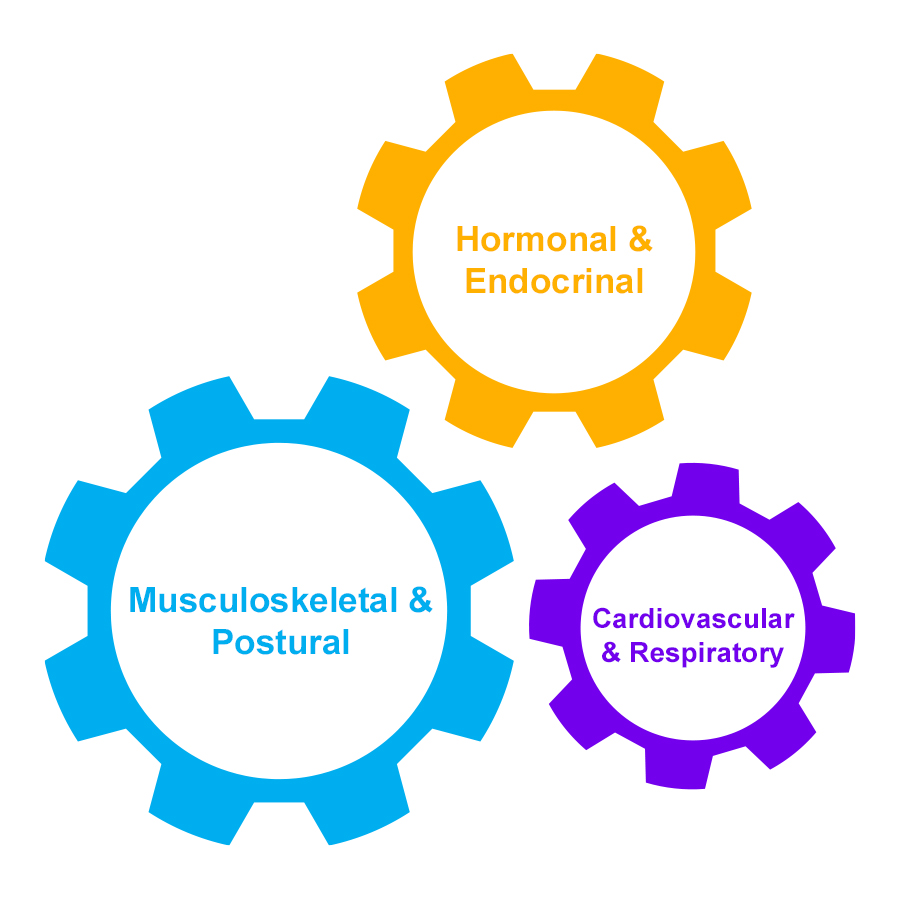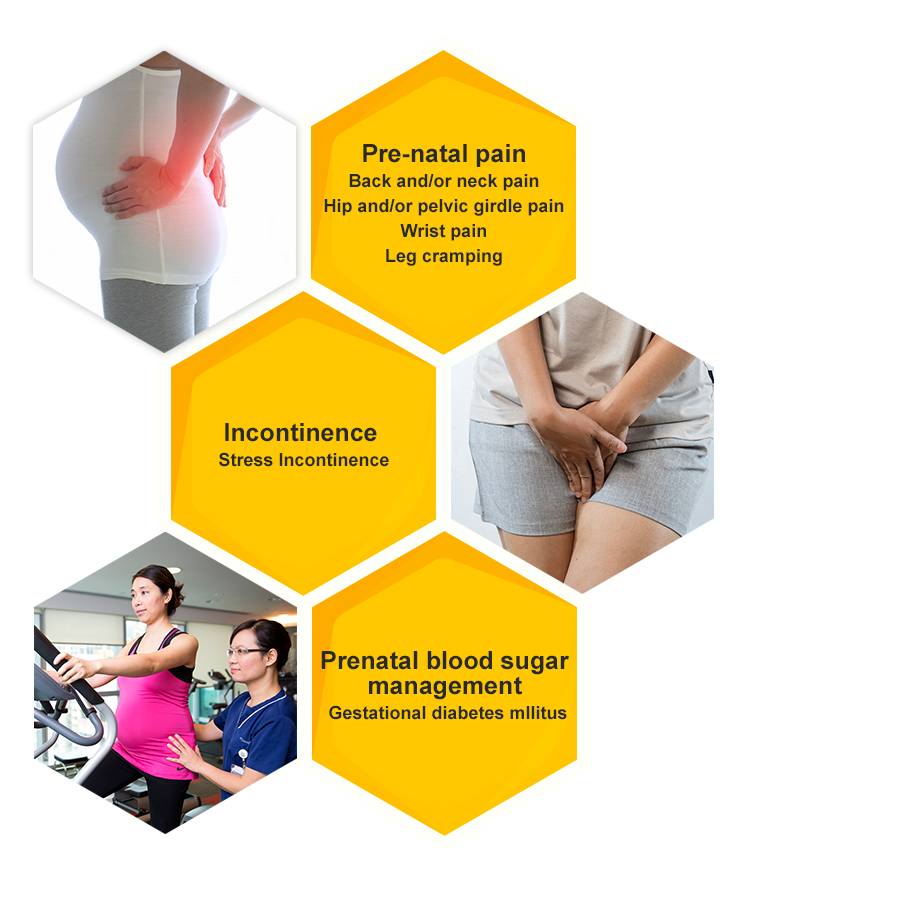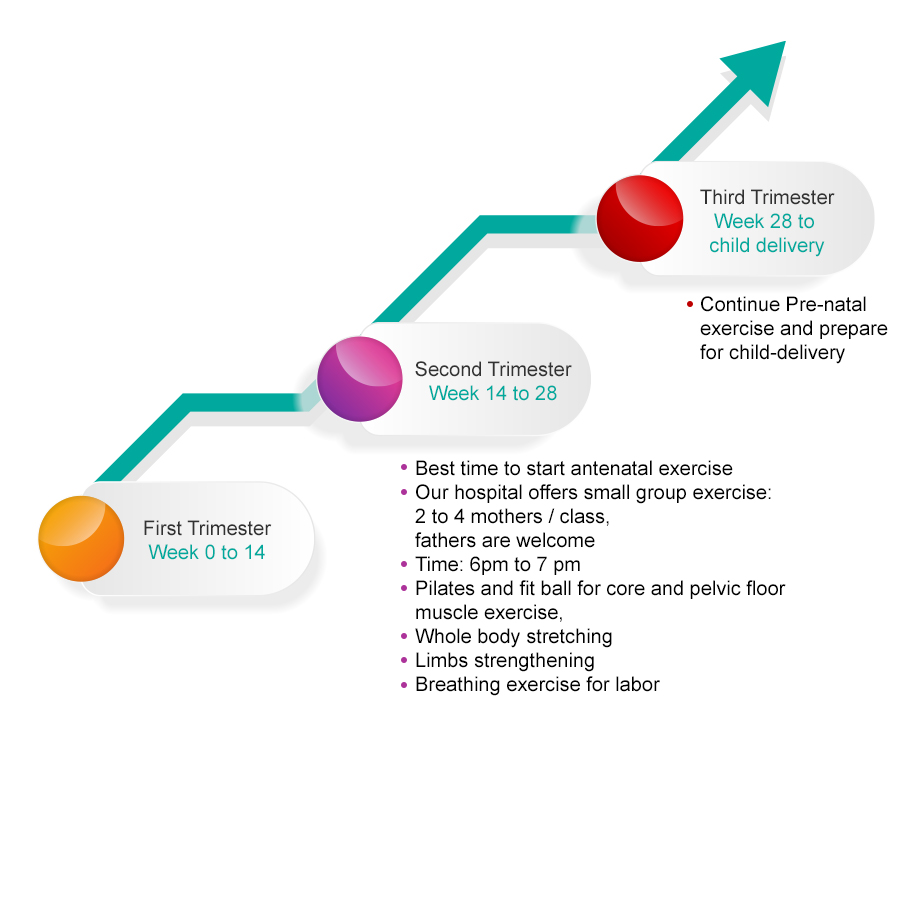 Antenatal Physiotherapy
Antenatal PhysiotherapyOur body undergoes significant changes during pregnancy, antenatal physiotherapy is dedicated to address the distinct needs and challenges faced by pregnant woman. Its primary goal is to foster a healthier pregnancy, alleviate discomfort, and prepare the body for the journey of labor and postpartum recovery.

Changes During Pregnancy
- Hormonal and Endocrinal changes
- Ligaments become lax
- Increase in fluid retention
- Risks of developing antenatal hyperglycaemia
- Musculoskeletal and Postural changes
- Ligament laxity can lead to pelvic and hip pain
- Increase in lordosis and risk of back pain
- Fluid retention may cause wrist pain
- Cardiovascular and Respiratory changes
- Increase in stroke volume and heart rate
- Increase in tidal volume and respiratory rate
What are some common pregnancy-related conditions?

- Prevent musculoskeletal pain
- Strengthen core and pelvic floor muscles to reduce back pain and stress incontinence
- Improve circulation and reduce tiredness
- Improve fitness and strength which may facilitate natural birth
- Improve antenatal and post-natal mood disorder
- May decrease risk of gestational diabetes or preeclampsia
- Weight management and facilitate post-natal weight reduction
- Prevent post-natal complications: such as diastasis rectus abdominis muscle or incontinence
 Pelvic Girdle Pain
Pelvic Girdle Pain - Due to hormonal and postural changes, childbearing mothers may easily develop pelvic girdle pain. It may progress in the early stage of pregnancy and worsen in the late stage
- 1 out of 5 mothers may develop pelvic and back pain during pregnancy
- The sooner it is identified and assessed, the better it can be managed
- Activity modification
- Pain relieving treatment
- Therapeutic exercise to enhance core stability
- Provision of equipment e.g. pelvic girdle support belt, walking aids, etc.
